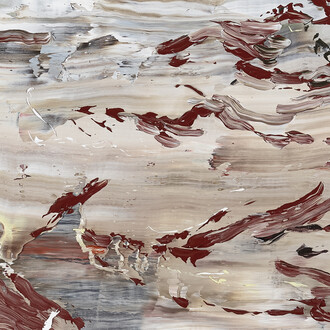ArtNoble Gallery is pleased to present Né qui, né altrove. On domestication, a group exhibition featuring works by Friedrich Andreoni, Hernán Pitto Bellocchio, Zazzaro Otto, Francesca Pionati, Simon Starling, Marko Tadić, and Andrea Zittel, curated by Arnold Braho.
The exhibition project Né qui, né altrove. On domestication takes its title from a crucial episode in the recent history of social movements in Italy: the demonstration held on November 30, 2002, against detention centers for migrants. With the slogan “Neither here, nor elsewhere”, that event did not merely challenge one specific detention site but denounced a broader system of confinement and control, highlighting how spatial violence was then enacted in relation to migration policies and transformations in labor within a global context.
Né qui, né altrove. On domestication thus seeks to interrogate space as a political device, capable of establishing degrees of inclusion and exclusion without ever producing an absolute “outside.” From this perspective, the exhibition takes that event as a starting point for reflecting on contemporary forms of control, on the porous spaces of globalization, and on the possibility of imagining an elsewhere that does not coincide with either isolation or resignation. The project connects with those dynamics of spatial violence that cut across today’s different forms of power, manifesting themselves both in urban policies of gentrifi- cation and social exclusion—as in the case of Leoncavallo—and in the imperialist violence inflicted upon Palestinian territories.
Domestication (from the Latin domesticus, “of the house”) is a multidimensional concept: it traverses biology, sociology, cultural studies, and political theory. Across these fields, it points to a process of control, adaptation, and transformation that renders what is external and different conforming and functional to an established order. Techniques of organization and control—such as urban segregation, the creation of borders, differentiated access to services and resources—produce inclusion or exclusion, belonging or marginality. Spatial violence (Eyal Weizman) is a concept that describes how space itself, the landscape, and the built environment become active instruments of domination, control, and oppression. In particular, Weizman argues that space is not merely a passive site where violent events unfold but the very medium through which violence is exercised and structured.
Starting from these premises, the exhibition aims to explore domestication as process. It is not simply a matter of producing familiarity, but of observing how certain symbols, images, and subjects are normalized, integrated, controlled, and ultimately repressed. And yet, something escapes: what resists this movement of capture?
Within the exhibition, artistic practices are presented that address, from different perspectives, the tensions between control, space, and the possibility of escape. Francesca Pionati investigates the relationships between urban infrastructures, governance, and contemporary rituals. Her work transforms controlled spaces into sites of informal resistance and autonomous architectures, staging political and aesthetic tensions while redefining ways of inhabiting and perceiving the urban environment. Andrea Zittel, meanwhile, explores modes of dwelling as artistic and social practice, questioning how spaces, objects, and daily routines can be reimagined to challenge conventions and stimulate new forms of existence.
In Friedrich Andreoni’s works, objects overturn their roles: instruments designed to open become barriers, escape routes turn into dead ends; while Zazzaro Otto traverses social hierarchies by transforming heterogeneous materials into ironic devices that stage aliena- tion and the contradictions of contemporary precarity. Marko Tadić investigates utopia and exhibition politics, exploring the idea of display through narrative devices and visual forms that redefine both the exhibition format and the ways of experiencing the gallery space. Hernán Pitto Bellocchio reinterprets centers of power as ruins, stripping them of their aura of stability. Simon Starling interweaves natural, colonial, and cultural histories, transforming objects, spaces, and processes into discursive operations that reveal the deep dynamics of memory, historical traces, and the ways the past is constructed and reinterpreted.
(Text by Arnold Braho)












